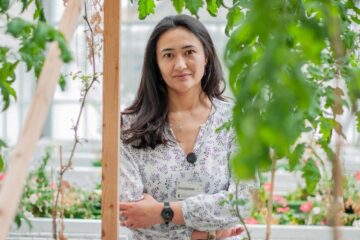Highly stable quantum light source for applications in quantum information developped

The scientists have actively stabilized the wavelength of the photons emitted by a semiconductor thereby neutralizing the charge noise in the semiconductor. The results were developed in close collaboration with the Universities of Bochum, Paderborn and Lyon and have been published in the magazine «Physical Review X».
Light consists of quantum particles, so-called photons. With a single photon it is possible to transfer quantum information. The information can be encoded in the polarization or in the phase of the photons’ wave packets and can be used in quantum communication and computation. In such applications, a single-photon source, a device that emits photons one by one, is a prerequisite. One of the most promising platforms for single-photon sources is based on semiconductor quantum dots. One major unsolved problem is, however, that the “color” (or wavelength) of the photons emitted by a quantum dot is not locked to a precise value; rather, it wanders around randomly.
The fluctuations in the wavelength of the photons originate from imperfections in the vicinity of the quantum dot. These imperfections can trap electric charge in the semiconductor resulting in noise. To remove this «charge noise», Prof. Warburton of the Department of Physics at the University of Basel and his team have developed a quantum-classical hybrid system that connects a single quantum dot to a constant-wavelength laser. This stabilizing mechanism monitors continuously the fluctuations via the highly sensitive optical absorption of the quantum dot. By applying the exact opposite effect, the electrical field experienced by the quantum dot can be actively regulated.
Stream of single-color photons
With this system, the scientists succeeded in generating a nearly perfect stream of single-color photons. A notable point is that a quantum system could be made technically useful by using a classical feedback scheme, a general feature which has not been demonstrated up until now.
This new scheme – through its highly effective removal of the charge noise – potentially enables a stable single-photon source and may lead, for example, to improvement in semiconductor-based spin quibts. The study was supported by the National Center of Competence in Research «QSIT – Quantum Science and Technology», for which the University of Basel acts as Co-Leading-House.
Original Citation
Jonathan H. Prechtel, Andreas V. Kuhlmann, Julien Houel, Lukas Greuter, Arne Ludwig, Dirk Reuter, Andreas D. Wieck, and Richard J. Warburton
Frequency-Stabilized Source of Single Photons from a Solid-State Qubit
Phys. Rev. X 3, 041006 (2013) | DOI: 10.1103/PhysRevX.3.041006
Weitere Informationen:
http://www.unibas.ch/index.cfm?uuid=13E5EDEA0A1F08911EC9FDCCE058ED96
&type=search&show_long=1&&o_lang_id=2
Media Contact
More Information:
http://www.unibas.chAll latest news from the category: Physics and Astronomy
This area deals with the fundamental laws and building blocks of nature and how they interact, the properties and the behavior of matter, and research into space and time and their structures.
innovations-report provides in-depth reports and articles on subjects such as astrophysics, laser technologies, nuclear, quantum, particle and solid-state physics, nanotechnologies, planetary research and findings (Mars, Venus) and developments related to the Hubble Telescope.
Newest articles

How the Immune System Learns from Harmless Particles
Our lungs are bombarded by all manner of different particles every single day. Whilst some are perfectly safe for us, others—known as pathogens—have the potential to make us ill. The…

Biomarkers identified for successful treatment of bone marrow tumours
CAR T cell therapy has proven effective in treating various haematological cancers. However, not all patients respond equally well to treatment. In a recent clinical study, researchers from the University…

She deciphers how tomato roots communicate
Ora Hazak has always been fascinated by plants and is studying the signals that roots send to the rest of the organism. She aims to understand this communication in order…





















